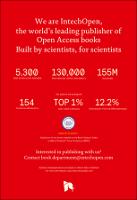Chapter Unmanned Ground Robots for Rescue Tasks
| dc.contributor.author | Berns, Karsten | |
| dc.contributor.author | Nezhadfard, Atabak | |
| dc.contributor.author | Tosa, Massimo | |
| dc.contributor.author | Balta, Haris | |
| dc.contributor.author | Cubber, Geert De | |
| dc.date.accessioned | 2021-06-02T10:10:03Z | |
| dc.date.available | 2021-06-02T10:10:03Z | |
| dc.date.issued | 2017 | |
| dc.identifier | ONIX_20210602_10.5772/intechopen.69491_344 | |
| dc.identifier.uri | https://library.oapen.org/handle/20.500.12657/49230 | |
| dc.description.abstract | This chapter describes two unmanned ground vehicles that can help search and rescue teams in their difficult, but life-saving tasks. These robotic assets have been developed within the framework of the European project ICARUS. The large unmanned ground vehicle is intended to be a mobile base station. It is equipped with a powerful manipulator arm and can be used for debris removal, shoring operations, and remote structural operations (cutting, welding, hammering, etc.) on very rough terrain. The smaller unmanned ground vehicle is also equipped with an array of sensors, enabling it to search for victims inside semi-destroyed buildings. Working together with each other and the human search and rescue workers, these robotic assets form a powerful team, increasing the effectiveness of search and rescue operations, as proven by operational validation tests in collaboration with end users. | |
| dc.language | English | |
| dc.subject.classification | bic Book Industry Communication::J Society & social sciences::JK Social services & welfare, criminology::JKS Social welfare & social services::JKSW Emergency services::JKSW3 Ambulance & rescue services | |
| dc.subject.other | unmanned ground vehicles, search and rescue | |
| dc.title | Chapter Unmanned Ground Robots for Rescue Tasks | |
| dc.type | chapter | |
| oapen.identifier.doi | 10.5772/intechopen.69491 | |
| oapen.relation.isPublishedBy | 09f6769d-48ed-467d-b150-4cf2680656a1 | |
| oapen.relation.isFundedBy | FP7-SEC-2011-1 | |
| oapen.grant.number | 285417 | |
| oapen.grant.acronym | ICARUS |

